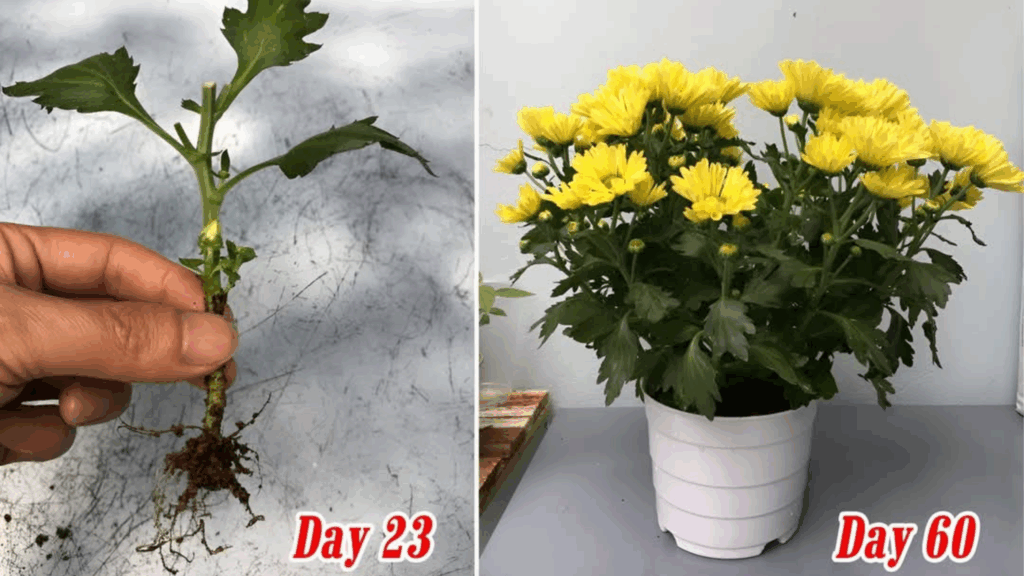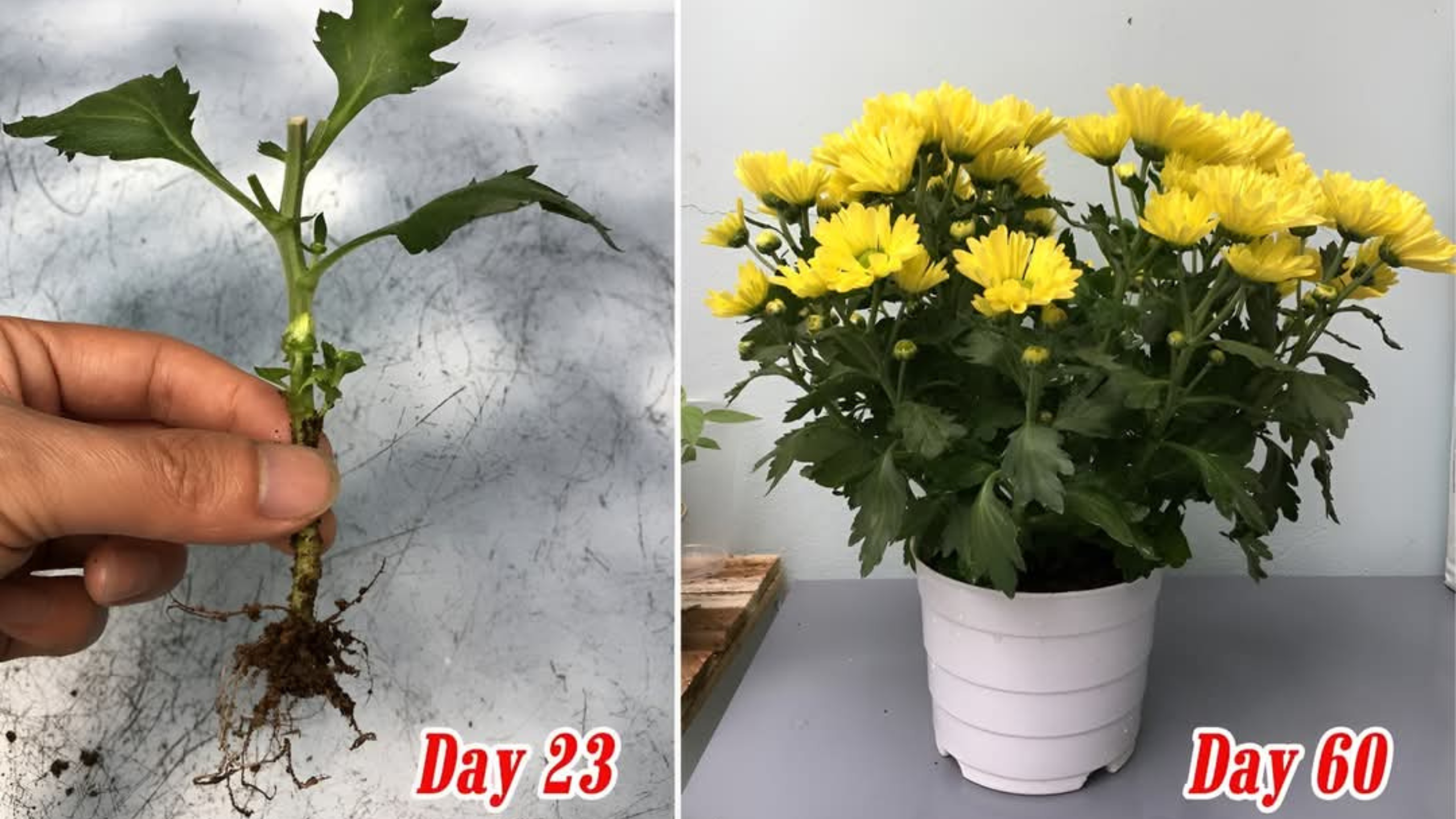Yellow chrysanthemums are among the most cheerful and eye-catching flowers you can grow. Whether you’re looking to brighten up your garden or decorate your balcony with bursts of golden color, propagating these blooms from cuttings is a quick and simple way to expand your floral display.
Follow this step-by-step guide to grow vibrant yellow chrysanthemums from cuttings—with minimal fuss and rewarding results.
Why Grow Chrysanthemums from Cuttings?
Propagating chrysanthemums (commonly called “mums”) from cuttings allows you to:
Save money by multiplying your plants
Maintain the exact color and traits of the parent plant
Enjoy faster blooms than starting from seeds
Control quality and timing of growth
Let’s get started!
Step 1: Select Healthy Cuttings
Start with a mature yellow chrysanthemum plant that’s free of disease and pests. Choose green, healthy shoots that haven’t yet flowered. These are more likely to root successfully.
Each cutting should be:
About 10 to 15 cm (4–6 inches) long
Free of any buds or blooms
Taken from the top or side shoots of the plant
Step 2: Prepare the Cuttings
Using a pair of sharp, sterilized scissors or garden shears, cut just below a leaf node—this is where roots are most likely to form.
Remove the bottom leaves, leaving just the top two sets.
If the top leaves are large, consider trimming them slightly to reduce moisture loss.
This helps the plant focus its energy on root development instead of maintaining foliage.

Step 3: Use Rooting Hormone (Optional but Recommended)
Dip the cut end of each stem into rooting hormone powder to encourage faster root growth and higher success rates.
While this step is optional, it’s especially helpful if you’re propagating multiple cuttings or if the environment isn’t ideal for rooting.
Step 4: Plant the Cuttings
Fill small pots or seedling trays with a light, well-draining potting mix—ideally a mix of peat, perlite, or sand.
Make a hole in the soil with a pencil or stick.
Insert the cutting so that the node is buried but the remaining leaves sit above the soil.
Firm the soil gently around the stem.
Tip: Avoid crowding the cuttings. Give each enough space for airflow and light.
Step 5: Create a Humid Environment
Moisture is key to successful rooting.
Cover the pots loosely with a clear plastic bag or place them in a propagation dome.
Ensure the covering doesn’t touch the leaves—use sticks or wire hoops if needed.
This mini greenhouse effect helps maintain high humidity, which is crucial during the rooting stage.
Step 6: Place in Bright, Indirect Light
Avoid direct sunlight, which can overheat or dry out the cuttings.
Instead, place them:
Near a bright window with filtered light
Or under grow lights if indoors
In a sheltered outdoor space if weather allows
Keep temperatures between 18–24°C (65–75°F) for best results.
Step 7: Water Gently and Consistently
The soil should remain moist but never soggy. Use a spray bottle or a gentle watering can to moisten the mix regularly.
Check soil moisture daily
Avoid overwatering to prevent rot
Don’t let the soil dry out completely
Step 8: Monitor Root Development
Roots typically form within 3 to 4 weeks, sometimes sooner in ideal conditions.
You’ll know it’s working if:
New leaves start to appear
The plant resists a gentle tug (indicating roots are anchoring)
If you see mold or rot, remove affected cuttings and ensure better air circulation or reduce humidity.
Step 9: Transplant to Larger Pots or Garden Beds
Once your cuttings are well-rooted and showing new growth, they’re ready to move on.
Transplant into individual pots or garden soil with good drainage
Handle gently to avoid damaging the new roots
Space them at least 20–30 cm apart to allow full growth
Let the new plants acclimate gradually if moving from indoors to outdoors.
Step 10: Long-Term Care for Blooming Success
To help your yellow chrysanthemums thrive:
Water regularly, especially during hot weather
Fertilize every 2–3 weeks during the growing season with a balanced fertilizer (10-10-10)
Pinch back tips early in the season to encourage bushier plants and more blooms
Deadhead spent flowers to extend blooming time
Protect from frost if you’re in a cold climate—mums prefer warmth
Final Thoughts
Propagating yellow chrysanthemums from cuttings is not only easy but deeply rewarding. Within a few weeks, you’ll have strong young plants ready to fill your garden with vibrant blooms.

